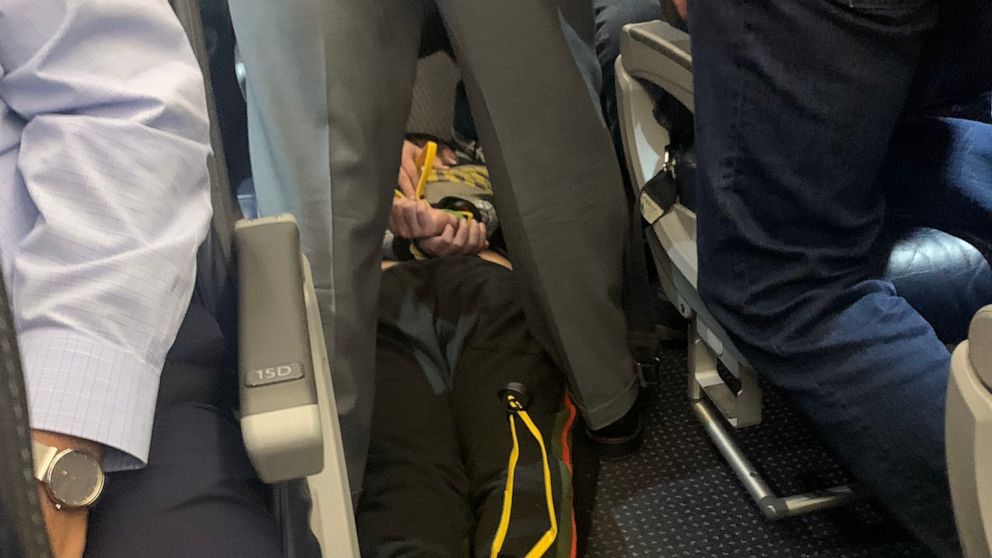Emergency Landing In Seattle: Tokyo Flight Diverted After Door Incident

Table of Contents
The Incident: Details of the Aircraft Door Malfunction
This incident involved Japan Airlines Flight JL78, a Boeing 787-9 Dreamliner. The aircraft door malfunction occurred approximately three hours into the flight, at an altitude of 35,000 feet over the Pacific Ocean. Reports indicate that the forward cargo door experienced a partial opening, triggering a warning light in the cockpit and causing a noticeable drop in cabin pressure. Passengers reported a loud bang followed by a whistling sound and a slight drop in cabin temperature, indicative of depressurization. The flight crew immediately initiated emergency procedures, prioritizing the safety of all passengers and crew.
Emergency Response: Actions Taken by the Flight Crew and Air Traffic Control
Upon detecting the aircraft door malfunction, the pilots of JL78 immediately contacted air traffic control at Seattle-Tacoma International Airport (SEA), requesting an emergency landing. Air traffic control swiftly coordinated with emergency services, including fire and rescue teams, to ensure a safe landing. The flight crew expertly executed emergency landing procedures, prioritizing a controlled descent and minimizing any potential risks associated with the compromised door. SEA's emergency response team was fully mobilized, clearing the runway and preparing for the arrival of the diverted flight. The landing itself was described as smooth and uneventful, mitigating any potential hazards caused by the partially opened door.
Passenger Experience and Aftermath: Impact on Passengers and Subsequent Actions
Passengers described the experience as initially frightening, with a mix of fear and uncertainty as the cabin pressure dropped. However, the calm and professional demeanor of the flight crew helped alleviate anxiety. Fortunately, no injuries were reported among the passengers or crew. Japan Airlines responded swiftly, providing passengers with hotel accommodations, meals, and alternative flights to New York City. The airline also issued a statement expressing their commitment to passenger safety and launched an internal investigation into the cause of the door malfunction. Independent investigations by aviation authorities are also underway to determine the root cause of the incident and to identify any potential preventative measures. The incident caused significant disruption to Japan Airline's schedule, impacting numerous connecting flights and leading to a temporary reduction in the airline's operational capacity.
Aviation Safety and Prevention: Lessons Learned and Future Implications
This incident underscores the critical importance of regular aircraft maintenance and inspections. Stringent adherence to aviation safety regulations, including thorough pre-flight checks and ongoing monitoring of aircraft systems, is paramount. This event highlights the need for continuous review and improvement of safety protocols and procedures, particularly concerning potential door malfunctions. Further investigation may lead to advancements in aircraft door technology, potentially incorporating more robust locking mechanisms or improved warning systems. The incident will undoubtedly lead to further analysis of risk assessment strategies and the development of more comprehensive preventative measures within the aviation industry.
Conclusion
This emergency landing in Seattle serves as a powerful reminder of the critical importance of aviation safety and the crucial role of well-trained professionals in handling unexpected events. The malfunctioning aircraft door on Japan Airlines Flight JL78 highlights the necessity of rigorous maintenance, proactive safety measures, and swift emergency response protocols. The successful outcome, thanks to the coordinated efforts of the flight crew, air traffic control, and emergency services, underscores the effectiveness of existing safety procedures, while also pointing towards areas for potential improvement and future advancements. Stay informed about the latest developments in aviation safety and learn more about emergency landing procedures. Search for "emergency landing procedures," "aircraft door safety," or "aviation safety news" to learn more.

Featured Posts
-
 Happy Face Streaming Guide How To Watch From Anywhere In The World
May 27, 2025
Happy Face Streaming Guide How To Watch From Anywhere In The World
May 27, 2025 -
 Watch Survivor Season 48 Episode 13 Online Free Best Options
May 27, 2025
Watch Survivor Season 48 Episode 13 Online Free Best Options
May 27, 2025 -
 Is Victor Osimhens Move To Manchester United Confirmed
May 27, 2025
Is Victor Osimhens Move To Manchester United Confirmed
May 27, 2025 -
 Mtar Aljzayr Kamyrat Almraqbt Tufdh Esabt Srqt Hqayb
May 27, 2025
Mtar Aljzayr Kamyrat Almraqbt Tufdh Esabt Srqt Hqayb
May 27, 2025 -
 Tracker Season 2 Episode 18 Everything You Need To Know About The Premiere
May 27, 2025
Tracker Season 2 Episode 18 Everything You Need To Know About The Premiere
May 27, 2025
